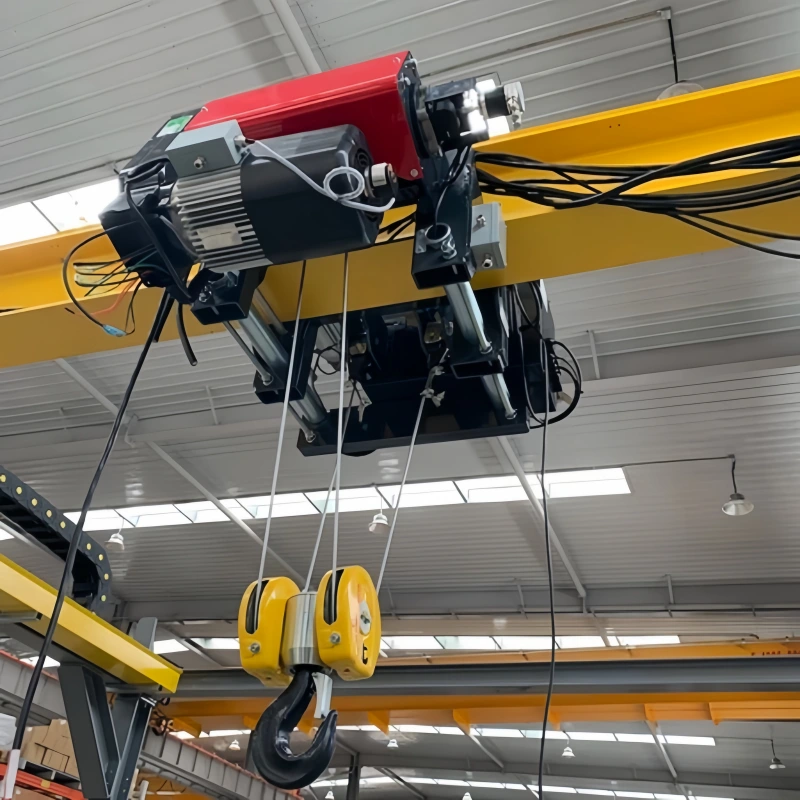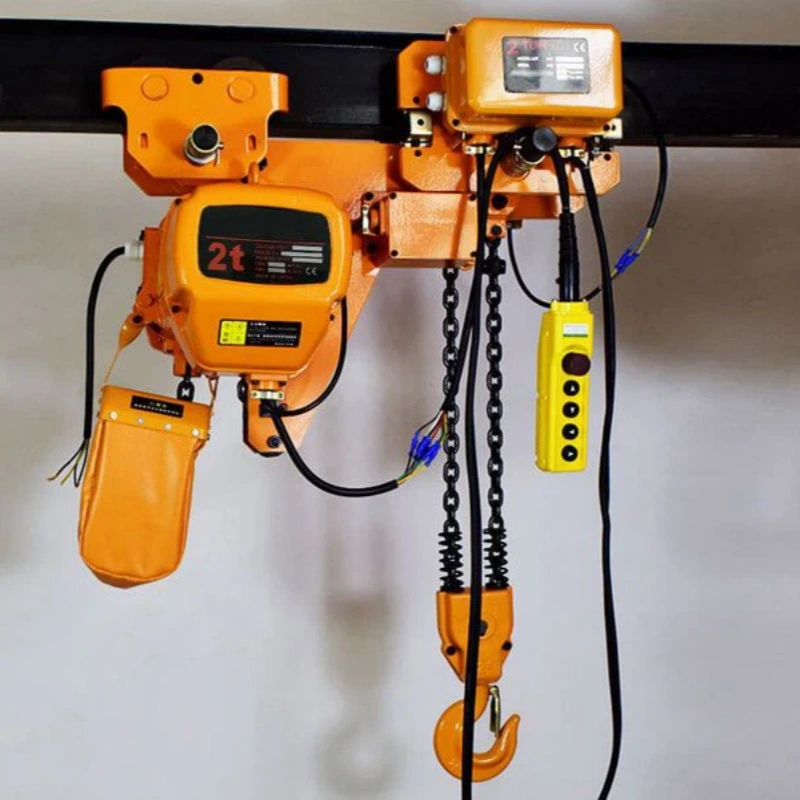A turnbuckle works by using opposite threads on each end of a central body. So, how does a turnbuckle work? When you rotate the body, you can tighten or loosen tension in cables or ropes with precision.
Powerful Machinery supplies turnbuckles that meet strict industry standards for quality and safety. The global market shows that demand remains steady, with construction and maritime industries leading usage.
Key Takeaways
A turnbuckle adjusts tension in cables or ropes by rotating its central body, allowing for precise control without disconnecting components.
Turnbuckles consist of three main parts: a central body, end fittings, and opposite threads, which work together to tighten or loosen connections.
Regular inspection and maintenance of turnbuckles are crucial for safety; check for wear, corrosion, and proper alignment before each use.
Choose the right material for your turnbuckle based on the environment; stainless steel is ideal for marine settings due to its corrosion resistance.
Follow a step-by-step installation process to ensure secure connections and safe operation, including checking the locking mechanism after adjustments.
What Is a Turnbuckle?
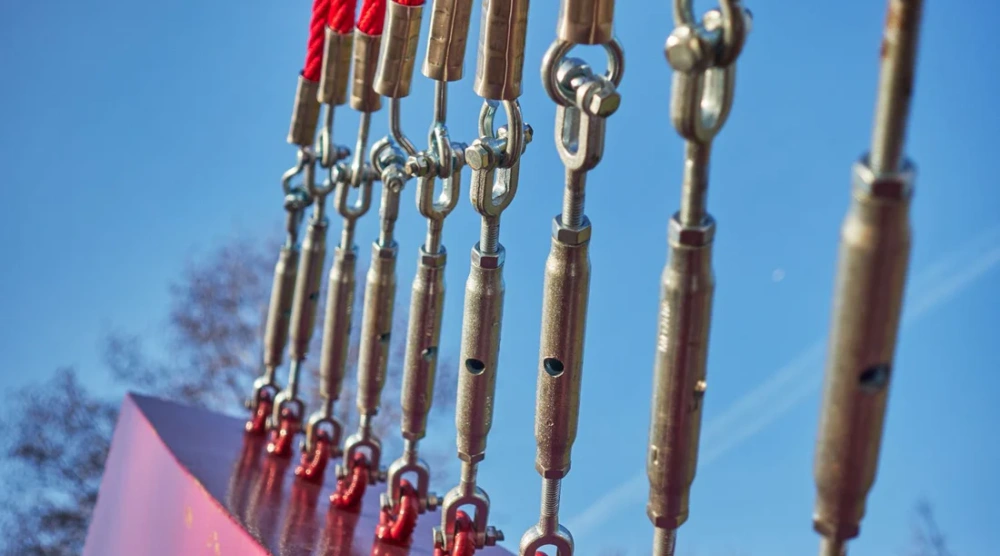
Definition
A turnbuckle is a simple but powerful device that lets you adjust the tension or length of ropes, cables, and rods. You often see turnbuckles in construction, marine, and industrial settings. When you need to make something tighter or looser, a turnbuckle gives you precise control.
The basic idea behind how a turnbuckle works comes from its unique design: you rotate the central body, and the ends move closer together or farther apart.
Turnbuckles have a long history. People first used basic tensioning tools in ancient times to tighten ropes and cables. During the Industrial Revolution, engineers improved the design, making turnbuckles stronger and more reliable. In the 19th century, turnbuckles became essential for building bridges and railways.
American factories started producing them in large numbers, using new materials and better manufacturing methods. These changes allowed turnbuckles to handle heavier loads and work in tougher environments.
Components
You can break down a turnbuckle into three main parts:
Central Body: This is the main section you turn by hand or with a tool. It has threads inside that connect to the end fittings.
End Fittings: Each end of the turnbuckle has a fitting, such as a hook, eye, or jaw. These fittings attach to the cables, rods, or other hardware you want to adjust.
Threads: The ends have opposite threads—one side is right-handed, and the other is left-handed. When you turn the body, the threads pull the ends together or push them apart.
Tip: Always check the type of end fittings before you choose a turnbuckle for your project. The right combination ensures a secure and safe connection.
Here is a quick look at common materials used for turnbuckles and their benefits:
Material | Advantages |
|---|---|
Galvanized Turnbuckle | Good corrosion resistance, economical, suitable for outdoor use, and widely available. |
Stainless Steel Turnbuckle | Excellent rust and chemical resistance, ideal for marine and corrosive environments, and longer lifespan. |
Understanding these parts and materials helps you see how a turnbuckle works in real-world applications. You can select the best type for your needs and ensure safe, reliable tensioning every time.
How Does a Turnbuckle Work?
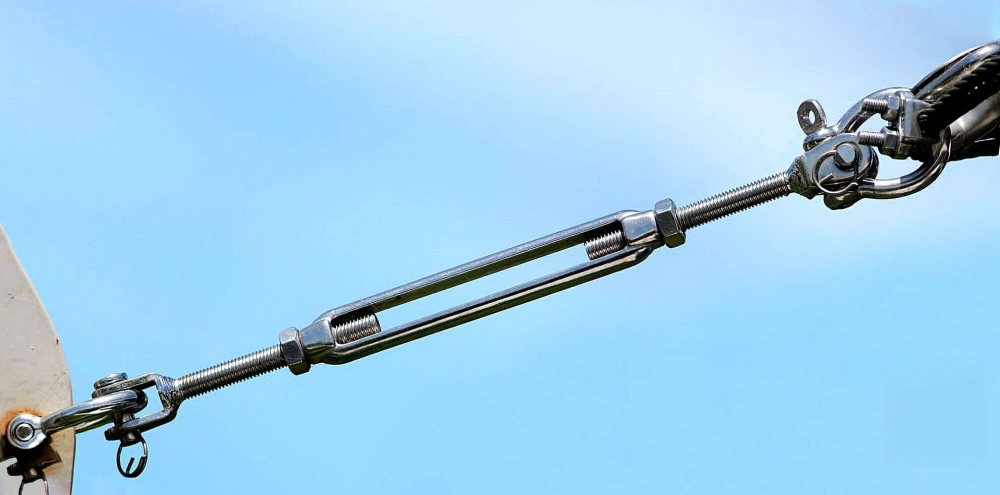
Mechanism
You can understand how a turnbuckle works by looking at its simple but effective mechanical design. The central body of the turnbuckle has threads on both ends—one side uses right-handed threads, and the other uses left-handed threads.
When you rotate the central body, both ends move at the same time. This action either pulls the ends closer together or pushes them farther apart.
When you turn the body clockwise, the turnbuckle shortens. This increases the tension on the cable or rod. If you turn it counterclockwise, the turnbuckle lengthens and the tension decreases.
This process uses the basic principles of leverage and tension adjustment. You can see the effects of rotation in the table below:
Rotation Direction | Effect on Assembly Length | Effect on Tension |
|---|---|---|
Clockwise | Shortens | Increases |
Counterclockwise | Lengthens | Decreases |
This simple mechanism lets you make precise adjustments. You do not need to disconnect the cables or rods. You only need to rotate the body to get the exact tension you want. This is the core answer to how a turnbuckle works in real-world situations.
Powerful Machinery designs turnbuckles with high-quality materials and strict manufacturing standards. You can trust their products to deliver smooth adjustments and reliable performance, even in tough environments.
Function
Turnbuckles play a key role in many industries. You use them to adjust tension, secure loads, and make small corrections in assemblies. The main function is to let you control the tightness or slack in cables, rods, or ropes without removing any parts.
Here are some common ways you might use a turnbuckle:
In aircraft, you adjust the tension on wires that brace wings or control flight surfaces.
On ships, you use turnbuckles to tighten rigging and lashings.
In the entertainment industry, you rely on turnbuckles to fine-tune rigging for stage lights and scenery.
In pipe systems, you make minor adjustments to handle field inconsistencies and reduce resistance in load transfer.
On construction sites, you use turnbuckles for fences, suspension bridges, and other structural needs.
You can also see these functions in the table below:
Industry | Function |
|---|---|
Aircraft | Adjusts tension on structural wires and flight control systems. |
Shipping | Tightens ship rigging and lashings. |
Entertainment | Makes small rigging adjustments for theatre, film, and concerts. |
Pipe Systems | Provides minor adjustments for field inconsistencies and load transfer. |
Construction | Used in structural applications, from fences to suspension bridges. |
You can see how a turnbuckle works in each of these settings. The turnbuckle gives you control, safety, and flexibility. Powerful Machinery’s turnbuckles meet international standards, so you know you are using reliable hardware for every job.
Tip: Always check the tension after making adjustments. This helps you keep your system safe and secure.
Installation
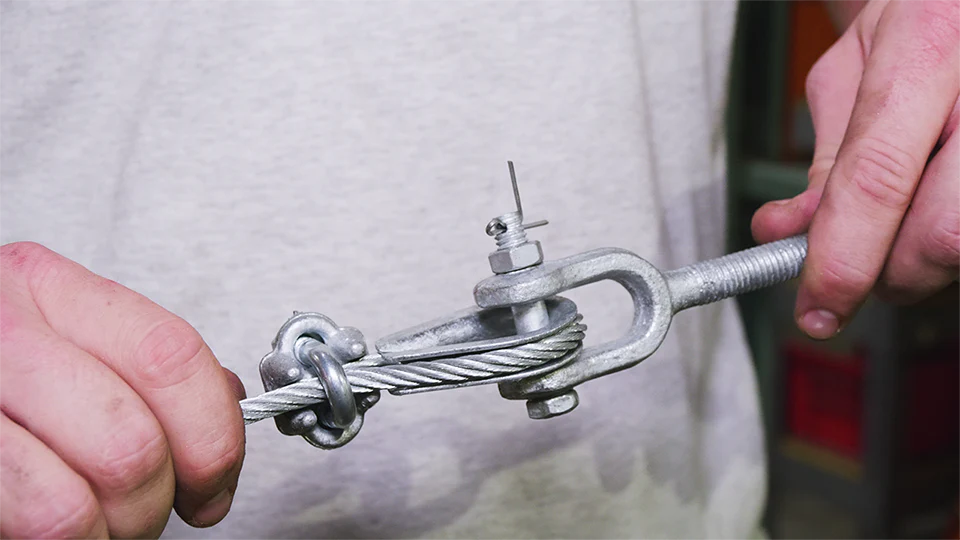
Steps
Installing a turnbuckle is a straightforward process when you follow the right steps. You can use Powerful Machinery turnbuckles for reliable performance in construction, marine, or industrial projects. Here is a step-by-step guide to help you set up your turnbuckle safely and efficiently:
Prepare Your Tools
Gather all the tools you need, such as wrenches, pliers, and safety gear. Make sure you have the correct size for your turnbuckle and fittings.Determine the Location
Choose the best spot for your turnbuckle. The location should allow easy access for future adjustments and inspections.Attach the Turnbuckle
Thread the turnbuckle onto the cable or rod ends. Check that the turnbuckle is oriented correctly and that the threads are fully engaged.Tighten Connections
Use wrenches to tighten both ends of the turnbuckle. Secure the fittings, but avoid over-tightening, which can damage the threads.Adjust Tension
Rotate the center body of the turnbuckle to adjust the tension. Watch the alignment and stability of the cables or rods as you make changes.Inspect Regularly
After installation, inspect the turnbuckle for signs of wear, corrosion, or loosening. Regular checks help maintain safety and extend the life of your hardware.
Tip: Always double-check that the locking mechanism or safety pin is in place before you finish the installation. This step prevents accidental loosening and keeps your system secure.
Adjusting Tension
You can adjust the tension in a turnbuckle by turning the central body. This action either tightens or loosens the connected cables or rods. Powerful Machinery turnbuckles make this process smooth and precise. Here are some best practices to follow:
Inspect the turnbuckle for wear, corrosion, or damage before each use.
Follow the manufacturer’s Working Load Limit (WLL) to avoid overloading.
Make sure the threads are fully engaged and aligned with the load.
Use lock nuts or safety pins to secure the turnbuckle’s position.
Avoid sudden or shock loads that can exceed the turnbuckle’s capacity.
Choose materials that match your operating environment, such as stainless steel for marine settings.
Proper alignment is important. Align jaws and eyes with the connected components to prevent uneven tension. Adjust the tension slowly and check your work as you go. If you use a wrench, turn the body in small increments and monitor the system for stability.
Note: Regular inspection is key. Include turnbuckle checks in your routine maintenance to catch any issues early.
Tips
You can improve safety and effectiveness by following these practical tips during installation and adjustment:
Always take up slack slowly. Rushing can cause uneven tension or damage.
Double-check that locking hardware, such as nuts or pins, is in place before leaving the setup.
Avoid turning the body too far or forgetting the direction of the threads. This mistake can lead to over-tightening or thread damage.
Inspect for corrosion and wear, especially in marine or outdoor environments.
Keep a record of inspections and adjustments for future reference.
Common Mistake | How to Avoid It |
|---|---|
Forgetting safety pins | Always secure locking hardware before finishing |
Over-tightening | Turn the body slowly and check tension regularly |
Ignoring corrosion | Inspect often, especially in harsh environments |
Misalignment of fittings | Align jaws and eyes with connected components |
You now understand how a turnbuckle works during installation and adjustment. By following these steps and tips, you can ensure your Powerful Machinery turnbuckles deliver safe and reliable performance in any application.
Applications
Construction
You see turnbuckles everywhere on construction sites. These tools help you keep tension on cables, wires, and supports. You use them to adjust scaffolding and secure structural frames.
Large projects, such as bridges and skyscrapers, rely on turnbuckles to maintain stability. Powerful Machinery turnbuckles meet strict safety standards, so you can trust them for heavy-duty work.
Maintain adjustable tension on cables and wires
Secure scaffolding and structural supports
Provide stability for high-tension steel wires in skyscrapers and bridges
Tip: Always choose certified turnbuckles for construction. This ensures safety and long-term reliability.
Marine
You use turnbuckles in marine environments to rig and secure ropes and cables. Powerful Machinery offers marine-grade turnbuckles made from premium 316 stainless steel.
These products resist corrosion, even in salty and wet conditions. You can rely on them for shipbuilding, deck lashing, and mooring. Their design meets international marine certifications, so you know your equipment will last.
Industrial
Turnbuckles play a key role in industrial machinery. You use them to adjust tension in conveyor systems, lifting equipment, and heavy machinery. Powerful Machinery turnbuckles feature high-strength steel alloys and advanced manufacturing. This ensures they meet demanding performance benchmarks.
Performance Benchmark | Description |
|---|---|
Tensile Strength | Ensures turnbuckles withstand high forces |
Material Composition | High-strength steel alloys boost durability |
Resistance to Environmental Stressors | Extends lifespan in outdoor and marine settings |
Note: Regular inspection helps you maintain safety and performance in industrial applications.
DIY
You can use turnbuckles for home and garden projects. They help you tighten fences, support trellises, and hang shade sails. Powerful Machinery offers a range of sizes and types, so you can find the right fit for your needs. Their certified products give you peace of mind, even for small tasks.
😊 Whether you work on a skyscraper or a backyard fence, Powerful Machinery turnbuckles deliver strength and reliability every time.
Safety
Keeping your turnbuckles safe and reliable starts with regular inspection and careful handling. You protect yourself and your equipment when you follow best practices and avoid common mistakes.
Powerful Machinery turnbuckles meet international safety standards, so you can trust their performance in demanding environments.
Inspection
You need to inspect turnbuckles often to catch signs of wear, corrosion, or damage. Inspection frequency depends on how you use the hardware. The table below shows recommended intervals:
Service Condition | Inspection Frequency |
|---|---|
Normal service | Yearly |
Severe service | Monthly to quarterly |
Special service | As recommended by a qualified person |
During each inspection, check for cracks, bent parts, or rust. Make sure threads are clean and fully engaged. Replace any turnbuckle that shows damage right away. Keep records of your inspections and maintenance activities for future reference.
Tip: Schedule inspections as part of your regular maintenance routine. This helps you catch problems before they become serious.
Handling
Safe handling reduces the risk of injury and extends the life of your turnbuckles. You should:
Check turnbuckles for wear and tear before each use.
Lubricate hardware to prevent friction and corrosion.
Use covers to protect turnbuckles when not in use.
Wear gloves and safety glasses to protect your hands and eyes.
Select heavy-duty turnbuckles rated for the load.
Never overload the hardware.
Inspect turnbuckles before every job.
Always follow the manufacturer’s instructions for installation and adjustment. Confirm that both ends are threaded in securely and that the turnbuckle is properly aligned. Use lock nuts or safety pins to prevent accidental loosening.
Common Mistakes
You can avoid accidents by steering clear of these frequent errors:
Not knowing the weight of the load. Always calculate the load and choose the right turnbuckle.
Ignoring load control. Maintain control over the load at all times.
Hiring unqualified workers. Make sure everyone handling turnbuckles has proper training.
Choosing the wrong rigging equipment. Select turnbuckles that match your application and environment.
⚠️ Remember: Powerful Machinery turnbuckles comply with ISO, TUV, and other global safety standards. You get peace of mind knowing your hardware meets strict requirements for quality and safety.
Powerful Machinery Turnbuckles
Powerful Machinery offers a complete range of turnbuckles designed for strength, safety, and versatility. You can choose from several types, each built for specific tasks and environments. Here’s a closer look at the main options:
Toggle Turnbuckle
You use toggle turnbuckles when you need flexibility and corrosion resistance, especially in marine or architectural settings. These turnbuckles feature a pivoting toggle end that allows for easy alignment and tension adjustment.
Powerful Machinery manufactures toggle turnbuckles from high-grade stainless steel, which stand up to harsh weather and saltwater. Always check the Working Load Limit (WLL) before use.
The WLL tells you the safe load capacity, and you should never exceed it. For critical jobs, safety factors help ensure reliable performance.
Ideal for marine rigging, wire railings, and landscaping
Pivoting ends allow for smooth installation and adjustment
Jaw to Jaw Turnbuckle
Jaw-to-jaw turnbuckles give you secure, stable connections. You attach the jaws to eye bolts or anchor points using clevis pins or bolts. This design works best for permanent or long-term setups where safety and stability matter most.
Powerful Machinery’s jaw-to-jaw turnbuckles use precision-cast stainless steel for maximum durability.
Perfect for structural supports, bridges, and heavy-duty rigging
Provides a strong, permanent connection
Note: Jaw-to-jaw turnbuckles suit stable applications, while hook and hook types work better for quick changes.
Hook and Hook Turnbuckle
You reach for hook and hook turnbuckles when you need fast, temporary connections. The hooks let you attach and remove cables or ropes quickly. This type is great for jobs that require frequent adjustments or setups that change often.
Powerful Machinery’s hook and hook turnbuckles use corrosion-resistant stainless steel and standard threads for easy compatibility.
Best for temporary fencing, event setups, or quick rigging
Allows for rapid connection and disconnection
Turnbuckle Type | Connection Method | Application Type |
|---|---|---|
Jaw to Jaw | Connects to eye bolts or anchor points | Permanent or stable setups |
Hook and Hook | Fast connections and disconnections | Temporary or adjustable setups |
Hook Eye Turnbuckle
Hook eye turnbuckles combine a hook on one end and an eye on the other. You get both quick attachment and a secure, fixed connection. These turnbuckles work well in construction, marine, and industrial projects.
Powerful Machinery uses stainless steel grades 304 and 316 for excellent corrosion resistance. Each turnbuckle meets international standards like ASME B30.26 and DIN 1480, so you can trust its safety and performance.
Suitable for marine, construction, and industrial rigging
Meets strict compliance and safety standards
Tip: Always match the turnbuckle type and material to your project’s environment and load requirements. Powerful Machinery’s certified products help you work safely and efficiently.
Feature | Description |
|---|---|
Material | High-grade stainless steel or alloy steel for durability and corrosion resistance |
Certifications | Certified to meet global safety and quality standards |
A turnbuckle lets you adjust tension and remove slack by rotating its body, making it essential for safe and precise tensioning systems.
“A turnbuckle adjusts tension and eliminates slack in ropes, cables, or chains by rotating its body to pull threaded end fittings closer or apart.”
Choosing certified turnbuckles from Powerful Machinery ensures you meet industry standards for safety and reliability.
You should inspect regularly, secure against unscrewing, and select the right material for your environment:
Material | Description | Best For |
|---|---|---|
Galvanized Steel | Cost-effective, moderate corrosion resistance | General-purpose |
Stainless Steel | Highly corrosion-resistant | Marine, harsh weather |
Stay safe by following maintenance schedules and using the right turnbuckle for every job.
FAQ
What is the main purpose of a turnbuckle?
You use a turnbuckle to adjust tension or length in cables, ropes, or rods. This tool helps you keep structures stable and secure in many settings.
How do you install a turnbuckle safely?
You attach each end fitting to your cables or anchor points. You rotate the central body to adjust tension. Always check for proper alignment and secure all locking hardware.
Which material should you choose for outdoor use?
You should select stainless steel turnbuckles for outdoor or marine environments. Stainless steel resists rust and corrosion, giving you longer service life.
Tip: Always match the turnbuckle material to your project’s environment for best results.
How often should you inspect your turnbuckles?
You inspect turnbuckles before each use and during regular maintenance. For heavy-duty or marine applications, check monthly. Replace any turnbuckle that shows signs of damage.
Application | Inspection Frequency |
|---|---|
Home/DIY | Yearly |
Construction | Monthly |
Marine/Industrial | Monthly |

